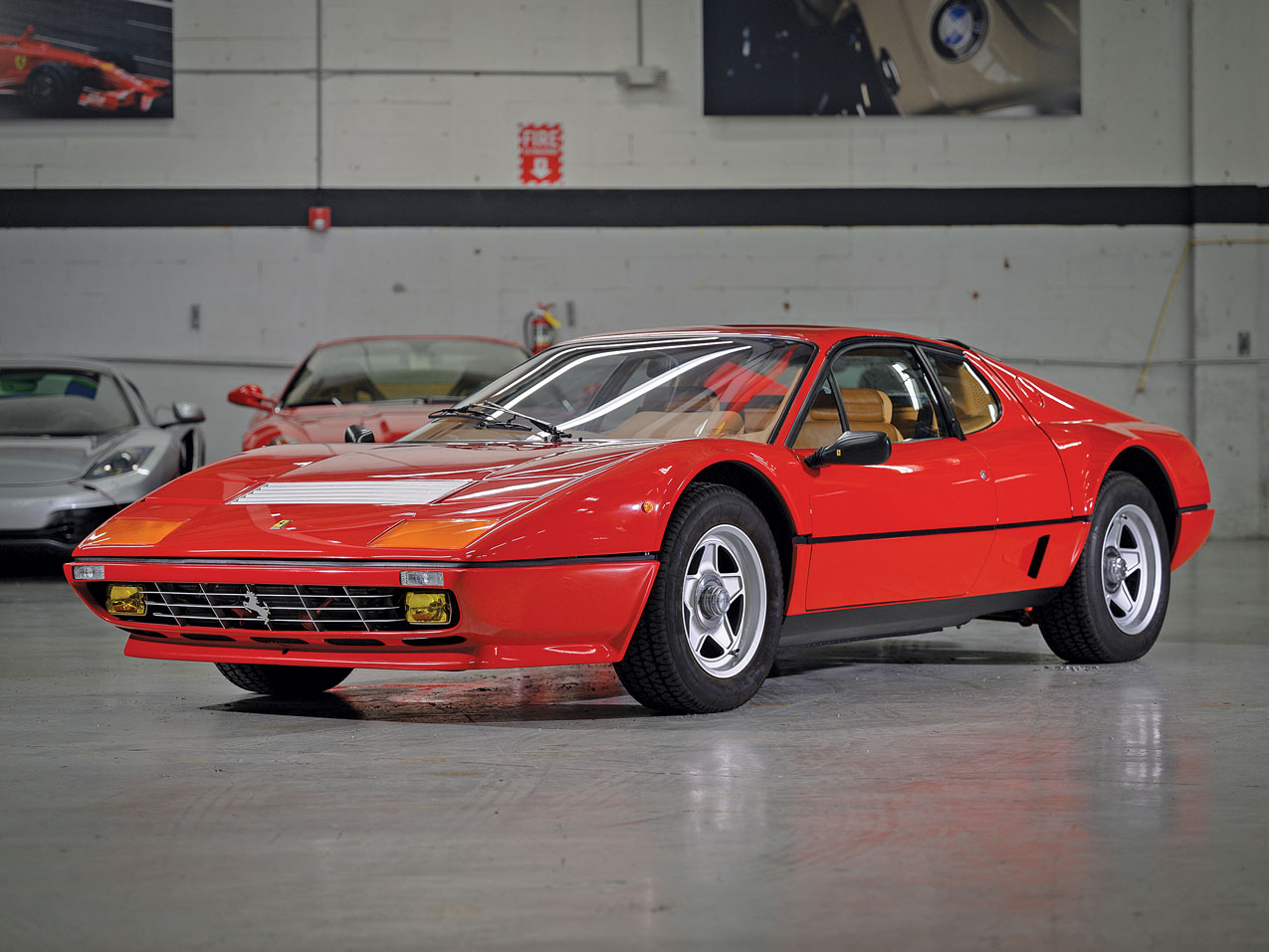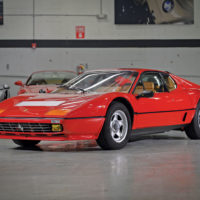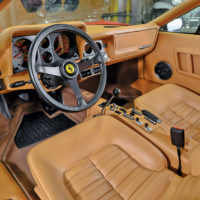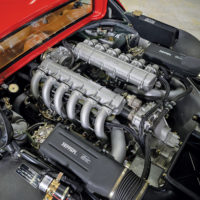SCM Analysis
Detailing
| Vehicle: | 1984 Ferrari 512 BBi |
| Years Produced: | 1982–84 |
| Number Produced: | 1,007 |
| SCM Valuation: | $238,000 |
| Tune Up Cost: | $8,000 and up |
| Chassis Number Location: | Top frame on right side of the engine compartment |
| Engine Number Location: | Top of taillight end of engine block |
| Club Info: | Ferrari Club of America |
| Website: | http://www.ferrariclubofamerica.com |
| Alternatives: | 1971–74 DeTomaso Pantera, 1982–85 Lamborghini Countach LP5000S, 1996–2003 Lotus Esprit V8 |
| Investment Grade: | B |
This car, Lot 2075, sold for $462,000, including buyer’s premium, at RM Sotheby’s Fort Lauderdale, FL, auction on March 26, 2022.
Mid-engine origins
There may have been exotic cars prior to mid-engine sports cars, but if “exotic” is defined as mysterious, striking or unusual, the mid-engine machines nailed the definition. First proven in race cars, a mid-mounted engine exchanged a tall frontal area for a short one and changed the car’s central weight distribution from up front to just behind the driver. The lower front end improved aerodynamics and the rearward weight shift decreased a car’s propensity to keep going straight in the corners.
The Bonnet/Matra Djet of 1961 is often credited with being the world’s first production mid-engine sports car. The 1964 DeTomaso Vallelunga was next, with Lotus’ Europa not far behind. These offerings feature small-displacement motors and gave no threat to high-end, high-performance GT cars. Lamborghini would change that with the 1966 introduction of its Miura P400.
The Miura featured a 345-hp 4.0-liter quad-cam V12 stuffed in a highly technical chassis. The package was dressed in an avant-garde Bertone body. The result remains one of the most influential cars of all time.
Ferrari joins the fray
Ferrari wouldn’t answer Lamborghini’s salvo for several more years, and when it did, it would be with the 365 GT4 BB. The BB, or Berlinetta Boxer, featured a 380-hp 180-degree V interpretation of Ferrari’s 4.4-liter “Daytona” engine. The potent V12 was mounted in a variation of Ferrari’s traditional oval-tube ladder frame. Dressing the car was left to Pininfarina, which called on the great Leonardo Fioravanti to do the honors.
If the Miura was a miniskirt, the Boxer was an evening gown. Fioravanti’s design was sexy but classy, hinting at its potential rather than shouting it. The Boxer was meant to be a usable vehicle for wealthy gentlemen. It had a comfortable interior, reasonable storage space and mechanicals that were dependable enough that the Boxer could be used for normal transportation.
The breed evolves…
The carbureted 365 GT4 BB would evolve into the carbureted 5.0-liter 512 BB in 1976 and the 512 BBi in 1981. The BBi featured Bosch fuel injection (hence, the “i”) costing around 20 hp of output, but making it more drivable and emissions-friendly.
Collectors tend to covet the early 365 GT4 BB models and a variation of the 512 BBi known as the “50,000 serial-number cars.” The 50k serial number roughly coincides with the beginning of 1984 Boxer production. A mere 144 1984 Boxers were reportedly built, and these examples are the trophy Boxers — the last of the breed.
As a point of interest, Ferrari only used odd numbers for its production cars up to serial number 75,000. Number 50,000 would have been roughly the 25,000th production Ferrari ever built. By comparison, Ferrari produced over 11,000 cars last year.
From a good home
The Rey Collection was the centerpiece of RM Sotheby’s Fort Lauderdale auction. Alfonso Rey modestly tells the story that he moved to Miami from Argentina in 1986 with $7,000 in his pocket, and now he has less. He may have less than $7,000 in his pocket today, but Alfonso and his son Jonathan have compounded the seed money into an array of businesses that span the Americas.
Their hard work has enabled them to assemble a truly impressive car collection. Actually, it’s a collection of cars, motorcycles, motorhomes, memorabilia and, until this auction, a Riva/Ferrari boat.
The collection has no theme. There are old cars, newer cars, European cars and American cars. There are sports cars, hot rods and even a couple Aston Martin Lagondas. All are in pristine condition and mechanically maintained. Jonathan makes regular Sunday morning drives to Key Largo, sampling different cars on each trip.
The Reys sent 22 of their cars to the Fort Lauderdale auction, ranging from a 1922 Ford Model T to a 2021 Chevrolet Corvette. All but two sold, making it a good day for the family as well as RM Sotheby’s.
George Washington’s Ferrari?
Newman Automotive R&D is a highly respected shop, and the owner, Paul Newman, is a known Boxer expert. I have no issue with the quality of the work done on this car, but I can’t help thinking the car is now a George Washington axe — the head and the handle have been replaced, but it’s still George Washington’s axe. The car has been repainted, the interior retrimmed, the engine rebuilt and the suspension rebuilt.
I can confirm this Boxer was in exceptional condition. The problem, for me, is that it is supposed to be a 7,200-mile car. Buyers of 7,200-mile cars buy originality, not $276,000 restorations.
At $462,000, this was an astonishing result for this Boxer. Prior to this sale, there were only four comparable auction sales over $400,000 recorded in SCM’s multi-decade Platinum Auction Database. Two of those sales were for the same 600-mile car. This car brought nearly $40,000 more than that 600-mile car.
The average of the database’s 2020, 2021 and 2022 auction sales is $273,500. That makes RM Sotheby’s $350,000–$400,000 estimate a bit optimistic, but hey, the car had low mileage and was near perfect, so why not shoot high?
There’s a difference between value and desire. It would be hard to support this car being worth over $400,000, but two people desired it. The price may not have made economic sense, but the car filled an emotional one. The Rey Collection received a gift with this sale, but I suspect the buyer didn’t mind. ♦
(Introductory description courtesy of RM Sotheby’s.)



